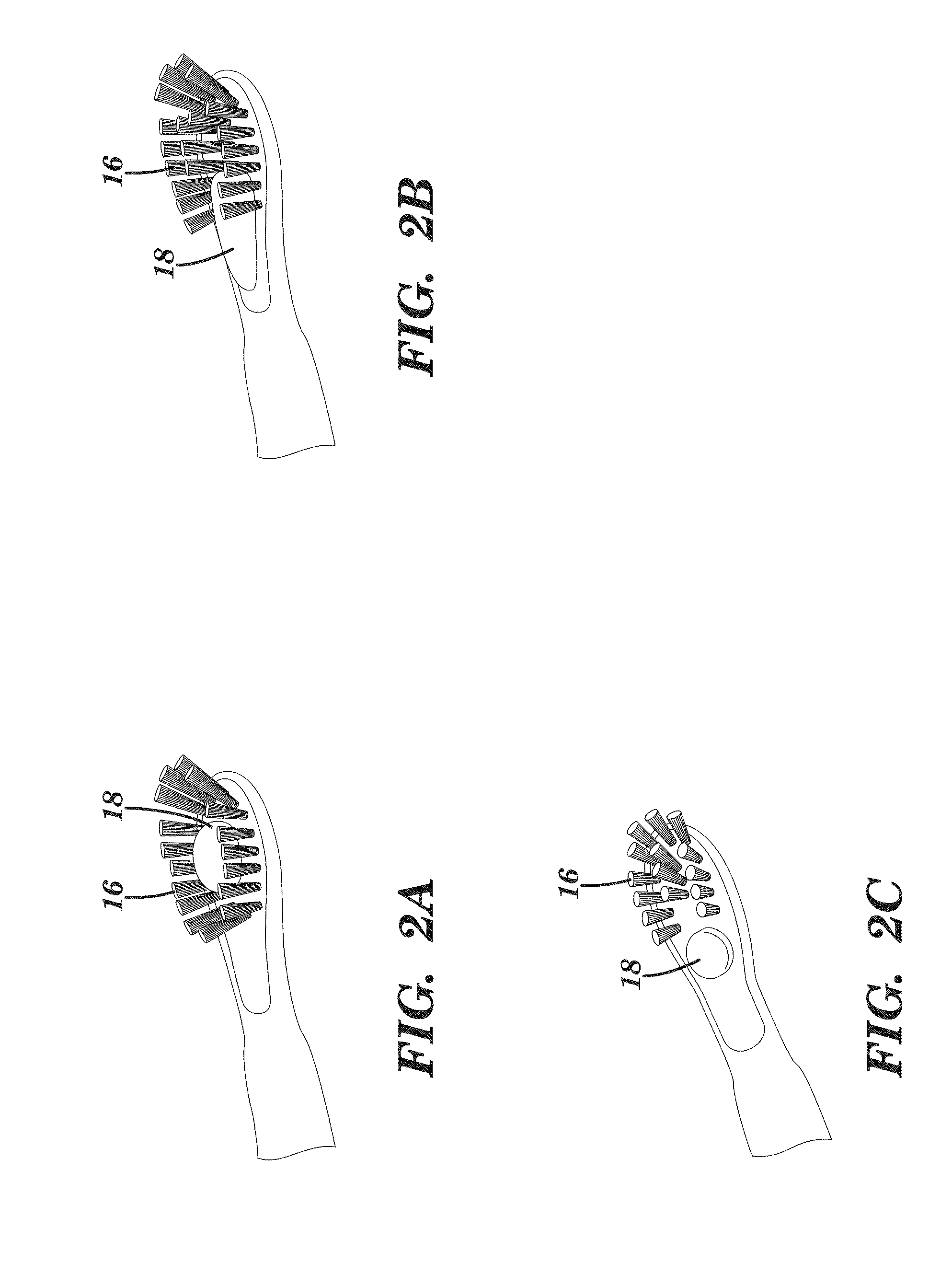Method and devices to increase craniofacial bone density
- Summary
- Abstract
- Description
- Claims
- Application Information
AI Technical Summary
Benefits of technology
Problems solved by technology
Method used
Image
Examples
example 1
High Frequency, Low Magnitude Forces, when Applied Through the Teeth, Are Able to Increase Bone Osteogenic Activity in Both Maxilla and Mandible
[0073]The objective of the following examples was to investigate if the application of high frequency, low magnitude forces on teeth increases the density of alveolar bone. Forty-eight Spraque-Dawley rats were divided into sham (i.e. control) and experimental groups. The experimental group was subjected to daily localized vibration for 5 minutes (under inhalation anesthesia) on the occlusal surface of the maxillary and mandibular right first molar at a frequency of 120 hz and 0.3 g of force. The experiment was conducted for 28 days. The alveolar bone of upper and lower jaws was evaluated using microcomputed tomography (microCT) and histomorphometry.
[0074]Adult male Sprague-Dawley rats (n=48) with an average body weight of 360 g (range 296-423 g, 120 days of age) were placed in plastic cages supplied with an identical “good laboratory diet” a...
example 2
High Frequency, Low Magnitude Forces of 60 Hz, 120 Hz, and 200 Hz, when Applied through the Teeth, are Able to Increase Bone Volume, Increase Trabecular Thickness, and Decrease Inter-trabecular Space
[0087]Using the materials and methods described in Example 1, rats were divided into four groups, one receiving vibrations at high frequency at 60 Hz, a second group receiving vibrations at high frequency at 120 Hz, a third group receiving vibrations at high frequency of 200 Hz. All vibration forces had similar low magnitude forces (5 microstrain) applied to upper first molar of the rat maxilla. The fourth group (i.e. the control group) did not receive any vibration. All animals received daily inhalation anesthesia to facilitate application of vibration for 5 minutes.
[0088]After day 28, the rats were further sustained for another 4 days without any inhalation anesthesia or vibrations in order to allow complete cellular response to the mechanical stimulus. After the 4 day rest period, all...
PUM
 Login to View More
Login to View More Abstract
Description
Claims
Application Information
 Login to View More
Login to View More - R&D
- Intellectual Property
- Life Sciences
- Materials
- Tech Scout
- Unparalleled Data Quality
- Higher Quality Content
- 60% Fewer Hallucinations
Browse by: Latest US Patents, China's latest patents, Technical Efficacy Thesaurus, Application Domain, Technology Topic, Popular Technical Reports.
© 2025 PatSnap. All rights reserved.Legal|Privacy policy|Modern Slavery Act Transparency Statement|Sitemap|About US| Contact US: help@patsnap.com



